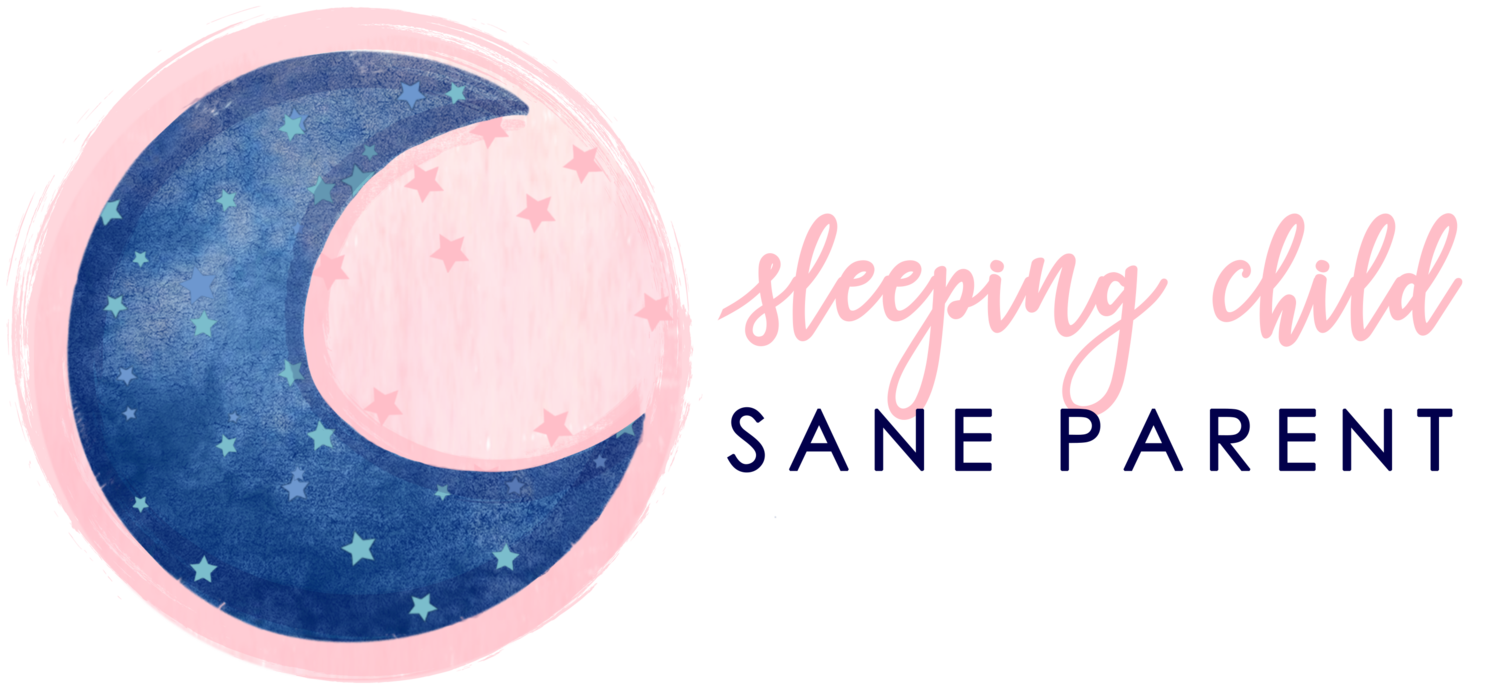“Baby” is the generalized name I provide for any age child I refer to (age 0-5 years), so look for other context to decipher if age matters for the specific info given. Most of the time, the term refers to infants and toddlers alike!
It’s happening THIS WEEK! It’s finally time to sleep train my second daughter, Holly!
While I have been establishing a solid sleep foundation for Holly since the day we brought her home from the hospital, sleep training is something a little different. Sleep training is the building that goes on top of the foundation — it’s the main attraction, the finished product! (Well, at least as “finished” as sleep can ever be.)
Working on Baby’s sleep foundation includes creating predictable sleep routines, keeping Baby well-rested by using age-appropriate waketimes, and limiting the use of props (like vibrating or inclined beds) or other sleep associations (like nursing or rocking to sleep) so Baby can begin learning independent sleep. These topics are covered in depth in my Newborn Dream Key.
Sleep training, on the other hand, includes everything from the sleep foundation, and then it goes a step further by eliminating any lingering sleep props (thus allowing Baby to truly self-soothe and sleep independently) and setting up healthy parameters around sleep. Sleep training is how Baby masters independent sleep.
**Please note that you can start establishing a solid sleep foundation from the very beginning, but I recommend waiting until at least 16 weeks to sleep train.
Eliminate Sleep Props
While there are many, many sleep props that I always discourage parents from using, there are two key props that I actually recommend during the newborn stage: a tight swaddle and a pacifier. These props are part of maintaining a womb-like (and therefore familiar and cozy) environment which helps a new baby feel secure.
However, when you sleep train, it’s time to eliminate even these props! Baby is no longer a newborn, so the swaddle is not only unnecessary, but it also becomes unsafe once Baby starts rolling. And if Baby relies on a pacifier to fall asleep, she’ll need the pacifier replaced constantly, which means she’s not in control of her own sleep. We eliminate both of these props and then turn things over to Baby to figure out how she wants to soothe herself. Once she truly learns to SELF-soothe, she’ll be capable of much better naps and nights!
Use Healthy Parameters
Newborns are pretty needy, so we tend to give them the benefit of the doubt — when they cry, they get attention! Are they hungry? Tired? Wanting to be held? We don’t always know, but we work tirelessly to figure it out and take care of those needs.
While we definitely still want to take care of our 4-month-old’s needs, it’s also time to acknowledge that one of her needs is to get healthy, unbroken sleep. She needs full-length naps and age-appropriate stretches of sleep in the night. We can reach these goals using a training method along with some healthy parameters for crying — that’s right! You can allow your 4-month-old a little bit of space to learn those important self-soothing skills rather than rushing in at every cry.
Newborns may have unpredictable and inconsistent naps, but babies 4+ months can usually be expected to sleep at least 60 minutes for naps (other than the last nap of the day, which is a 30-45 minute catnap). Since our end goal is naps of at least 60 minutes, I recommend using Crib 60 (or Crib 90 for older kiddos) when sleep training. So even though you may have immediately gotten your newborn out of bed after a 30- or 40-minute nap, you’ll leave your 4+ month old in bed at least 60 minutes at each nap time (other than the final nap for babies on 3- or 4-nap schedules).
If you’ve had an all-night buffet open for your little one thus far, sleep training is the time to put some parameters around that, too. After 4 months, Baby needs a maximum of two night feeds. Of course we want to make sure Baby is well-fed, but we also want to teach her that daytime is for eating and nighttime is for sleeping. Therefore, anytime she wakes before an appropriate night feed, you’ll use your training method to teach her to wait a little longer to eat (and babies who eat all night long are not typically eating for nutrition anyway — it’s just the only way they know how to sleep!).
So what is sleep training?
It’s simply handing over the reins to Baby so that she can learn to fully self-soothe and ultimately master the skill of independent sleep. Doesn’t that sound nice?!
If you’d like extra help and ideas regarding sleep training, set up a free discovery call to see how we can work through your child’s sleep issues together! Or simply grab a Dream Key and get started whenever you’re ready!


